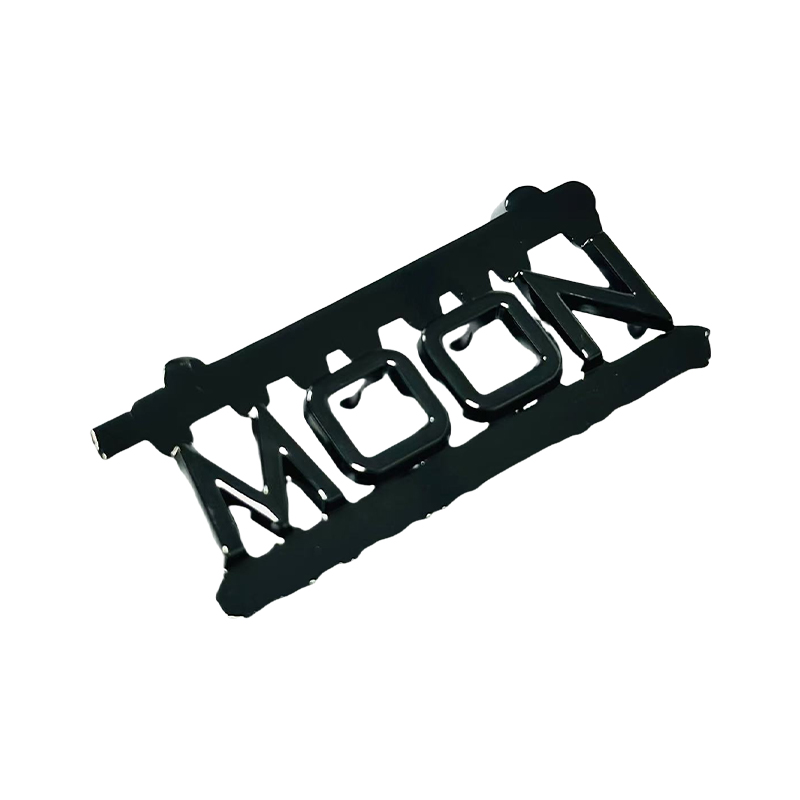How does the electroplating process affect the surface hardness of the metal dog buckle?
Release Time : 2025-04-09
As the core technology of metal surface treatment, electroplating process has a significant impact on the surface hardness of metal dog buckle. Its mechanism of action involves the coordinated regulation of material science, electrochemical principles and process parameters, which can be analyzed from the following dimensions.
The selection of electroplating layer material is the basis for improving hardness. For example, the hardness of hard chrome plating can reach 800-1000HV, which is much higher than the 200-300HV of ordinary stainless steel substrate. Nickel plating (400-600HV) and titanium plating (600-1200HV) can also significantly enhance the surface hardness through material characteristics. This hardness difference is due to the crystal structure and interatomic bonding force of the plated metal. For example, the body-centered cubic structure of chromium gives it high strength and wear resistance.
Parameters such as current density, temperature and plating solution composition directly affect the crystal morphology of the coating. High current density (5-10A/dm²) can promote the formation of fine grains and improve hardness; while too high temperature (>60℃) can easily lead to grain coarsening and reduce hardness. For example, in the nickel plating process, when the temperature is controlled at 45-55℃, the density of the coating is optimal and the hardness can be increased by 20%-30%. In addition, adding organic additives (such as sodium saccharin) to the plating solution can refine the grains and further enhance the hardness.
In acidic electroplating solutions, hydrogen atoms are easily adsorbed on the metal surface, resulting in hydrogen embrittlement. After hydrogen atoms penetrate into the matrix, they reduce the ductility of the metal and indirectly weaken the hardness. For example, the hardness of zinc coating decreases by 15%-25% in a hydrogen-containing environment. To avoid this problem, a low hydrogen embrittlement plating solution (such as alkaline zincate plating solution) or dehydrogenation treatment (200℃/2h) is required to release internal hydrogen.
The thicker the coating thickness, the better. When the thickness exceeds 10μm, the internal stress increases, which may cause the coating to crack or peel off, but reduce the hardness. Experiments show that the balance between hardness and adhesion is best when the thickness of the chrome plating layer is 5-8μm. Therefore, it is necessary to control the thickness through process optimization (such as pulse electroplating) and improve the toughness of the coating at the same time.
Heat treatment after electroplating (such as tempering at 200-300℃) can eliminate internal stress and improve the hardness of the coating. For example, the hardness of the nickel-plated layer can be increased by 10%-15% after heat treatment. In addition, polishing can improve the surface roughness and make the hardness test value closer to the true value. For example, the surface hardness test result of Ra0.1μm is 5%-8% higher than that of Ra1.0μm.
Hardness improvement requires good bonding strength as a prerequisite. If the coating is not well bonded to the substrate, it is easy to peel off during hardness testing. For example, the bonding strength between the coating and the stainless steel substrate must be ≥40MPa. Pretreatment (such as sandblasting, pickling) to enhance surface activity or use an intermediate layer (such as copper plating) can significantly improve bonding strength, thereby ensuring the stability of hardness improvement.
In the field of pet products, high-end metal dog buckle often uses hard chrome plating technology, and the hardness can reach more than 900HV, meeting the wear resistance requirements of frequent opening and closing. International standards (such as ASTM B487) have clear requirements for coating hardness. For example, the hardness of the zinc coating must be ≥150HV. Enterprises need to ensure that their products meet the standards through salt spray tests, hardness tests, etc. For example, after a certain brand of dog buckle was tested in salt spray for 48 hours, the coating hardness drop rate was <5%.
The electroplating process can significantly improve the surface hardness of the metal dog buckle through the synergistic effects of material selection, parameter control, post-processing optimization, etc. However, it is necessary to be vigilant about potential risks such as hydrogen embrittlement and internal stress, and ensure the stability of hardness improvement through process optimization and quality testing. In the future, with the development of technologies such as nano-electroplating and composite coatings, the hardness and functionality of the metal dog buckle will be further enhanced.







